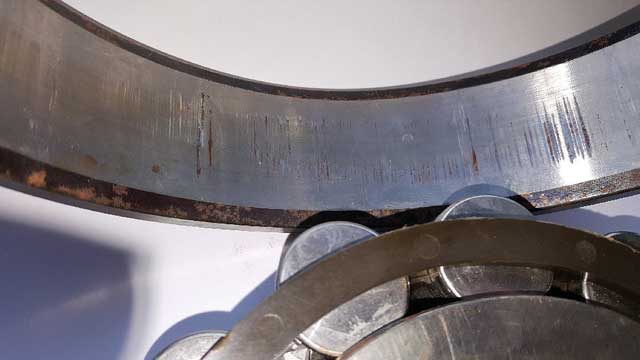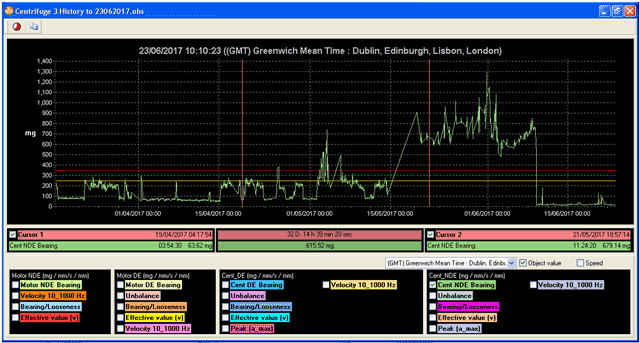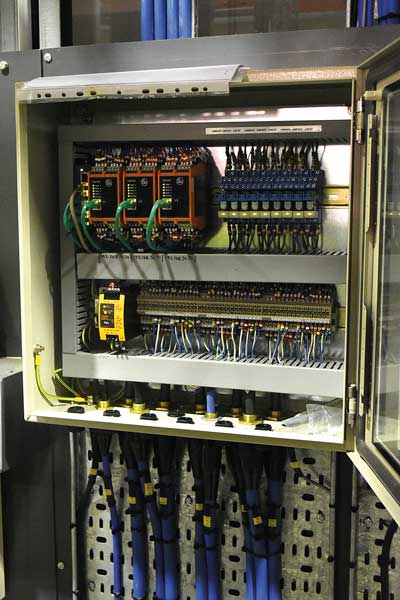South West Water’s monitoring systems on its pumps at Roadford reservoir and elsewhere are playing a key role in the supply of water to Exeter and Devon

Roadford Lake, South West Water’s largest and newest reservoir, is a key resource for the supply of raw water to the region around Exeter. Its importance is the main reason why South West Water chose to fit VSE vibration monitoring equipment from IFM electronic.
Water from Roadford Lake reservoir enters the delivery system via five pumps housed below the dam, although at any given time, except at times of highest demand, only one or two of the pumps will be operating. IFM electronic vibration monitors – essentially accelerometers – are fitted to the bearings of each pump and drive motor. In conjunction with VSE monitoring software, they continuously measure vibration as an aid to detecting wear or damage, so that action can be taken before these issues progress to failure.

There are 130 other VSE monitoring systems at other SWW sites, and they have now become part of the company’s standard build. The majority of these systems are connected to South West Water’s SCADA network, so SWW condition monitoring manager Brendon Teague can watch for trends from his desk in Exeter. At Roadford, accelerometers are fitted at the non-driven and driven ends of the motor shafts, to each pump, and in the plummer block bearings for the shafts connecting motor and pump. Accelerometer signals are fed to a local VSE100 monitor for evaluation and a reference guide is provided to explain the LED indications so that operators can readily spot anomalies. The VSE100 connects to the SCADA system.

As well as pumps, SWW makes extensive use of centrifuges in wastewater treatment. Like the pumps, they need careful monitoring, so accelerometers were fitted to their bearings. As soon as this had been done, it was noted that vibration on the nondrive end bearing of one centrifuge was unusual. Subsequently a big jump in acceleration occurred and investigation showed that a seal had failed, allowing sludge to enter the bearing. Discovering the problem in good time saved an estimated £40,000 in repairs.
Another incident concerned a pump that was not in use. The duty aggregate pump was running and vibration signals showed everything was normal. Even though the standby systems were not in operation, however, their vibration monitoring was still live, and Mr Teague noticed a change in the pattern from one of the bearings. Inspection revealed indentations on the internal bearing raceway: vibration had been transmitted to the non-running machinery, damaging a stationary bearing. Without vibration monitoring, this would most likely have gone unnoticed, resulting in premature failure of the bearing.
South West Water reports that the IFM vibration monitoring systems have achieved significant savings relating to hardware and secondary damage, as well as minimising the risk of losses through fines and even compensation claims. By using vibration monitoring, South West Water has avoided catastrophic issues for some eight years and, over that time, personnel have grown to trust the systems, which are never accused of “crying wolf”. On the contrary, they have been praised for detecting problems early.
South West Water considers vibration monitoring a modern approach to managing its assets, in Mr Teague’s words “providing the information we need for more informed view”. As evidence of its satisfaction, South West Water continues to specify IFM vibration monitoring equipment on new installations.
www.ifm.co.uk | 0208 213 0000 | enquiry.gb@ifm.com

